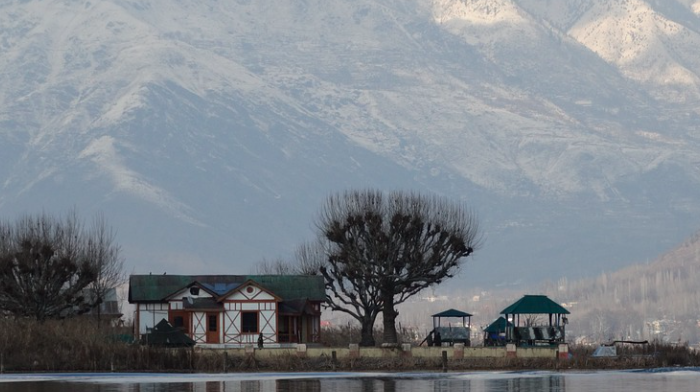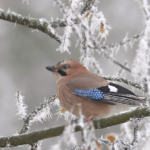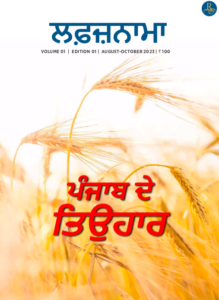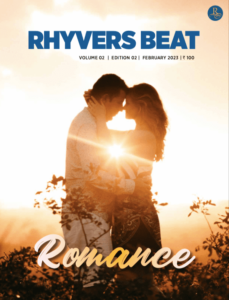Haiku Blossoms: Seasons in Haiku (6)
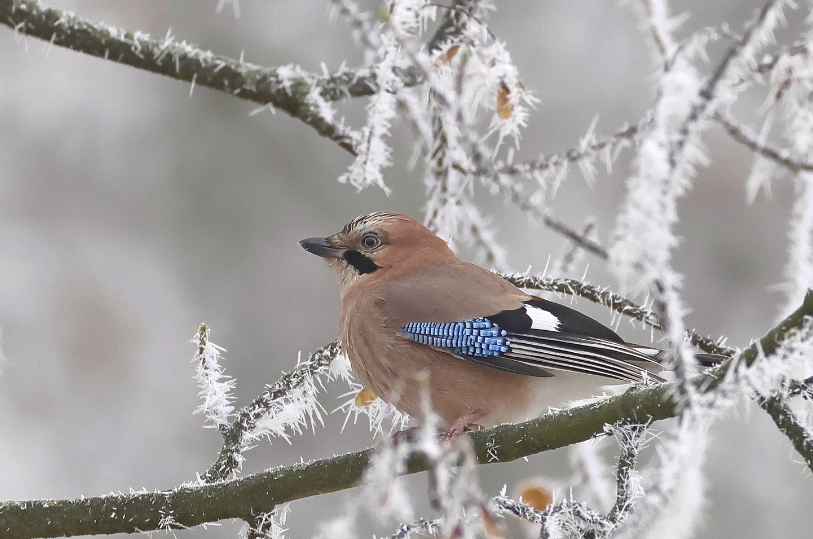
This week let us discuss the importance of ‘seasons’ and ‘seasonal references’ in haiku. Nature imagery is very prominent in haiku, as we discussed earlier. Did you know that traditional haiku are commonly associated with each of the four seasons?
Stephen Addiss notes in his book, The Art of Haiku: Its History through Poems and Paintings by Japanese Masters (2012), “references to a particular season….are called kigo. In Japanese, the great majority of traditional haiku indicate spring, summer, autumn, or winter, either directly…. or through images that suggest which season is being presented. Some of these references may seem arbitrary, but they are firmly fixed in haiku history.”
Geethanjali Rajan, is a celebrated haiku poet who teaches Japanese and English in Chennai, India. I found her article on “The Changing Seasons in haiku” published in the Usawa Literary Review very useful. With their kind permission, I share some excerpts. Readers may visit the Usawa Literary Review site ( https://www.usawa.in/site-
“Talking of nature in haiku, the traditional Spring-Summer-Autumn-Winter divisions of season words or kigo that are found in the haikai poems can be found in an almanac called the saijiki, which is a compendium of words that refer to seasons, and also includes examples of well-known haiku that use the particular season word. What the saijiki does for a writer of haiku in Japanese, whether senior or novice, is to provide a list of words in the 4 seasons, often along with another group of kigo under the division of ‘New Year’, which they can then refer to while composing their haiku. Such an almanac could contain thousands of season word references or kigo. The nature component of haiku was obviously strong for the earlier almanacs to have tens of thousands of entries. This again is not something that is static. A comparison of saijiki will show that many changes occurred across the years and different editions of the same saijiki would have entries modified to suit the times – a dynamic situation. Within the seasons in a saijiki, season words or kigo are specific and are further classified into various categories—weather, flora, fauna, heavenly occurrences (astronomy—sky, elements), geography (landscape), life, food and events (human activities). To help understand the specificity of kigo—if spring were the season, then we could probably find the following entries in a saijiki, apart from many, many others.
1. Season and climate — lengthening days, vernal equinox
2. Flora —plum blossoms, cherry blossoms
3. Fauna — baby animals —calf, colt
4. Astronomical occurrences —hazy moon
5. Geography—spring fields, spring mountains
6. Human activities —spring cleaning
7. Events — festivals, example: Doll’s festival
While these are specifics to the poetry tradition of haiku in Japan, what is more interesting is perhaps the tradition and the philosophy behind this whole concept. What the study of haiku did for me is to open out the world of nature and the understanding of how we can be respectful (revere is preferred but too strong a word in today’s urban scale of life, unfortunately) of a culture that harmonises with nature through its observation of it. The very fact that there is an almanac for writing a poetry form was fascinating enough for me to delve deeper. Here are a few pearls from the deep dive. I start with the shallow where you can paddle and hopefully, we can start the journey to the deeper end. While we speak of nature, the importance of the seasonal component in haiku is the comprehension of the changing of the season, the passage of time, the ephemerality, not just a static picture of a season itself. Each of the four seasons is divided into early, middle and late periods, with their specific occurrences. For instance, ume no hana (plum blossoms) come in early spring – they are after all the early blossoms that herald the season. This already divides the year into twelve parts, based on seasonal and natural occurrences. This is not to be confused with the calendar months of the year – we are talking seasons, not months.
As a beginner, I often got the process of haiku wrong. I thought that one could add the kigo to the haiku, according to the season I was writing about, and a good traditional haiku could be brewed. (It still can be done, I suppose.) But the deeper one dives into an almanac, the more one understands that the season word or kigo in Japanese isn’t there just to bring in a nature component or to express better what the poet wants to say. It is there to bring the reader to the same state of feeling as the poet, for in the observance and admiration of the changing season lies a seed of the sameness of sentiment or feeling (doukan). Prof. Haruo Shirane said of kigo in haiku that it – “anchors the poem in not only some aspect of nature but in the vertical axis, in a larger communal body of poetic and cultural associations. The seasonal word allows something that is small to gain a life of its own. The seasonal word, like the famous place name, also links the poem to other poems.” From there on, in very few words, a haiku poet takes you on the individual path he/she writes —for you to read, interpret, hold and then perhaps, let go.”
The aim of the World Kigo Database (a digital version of saijiki entries in English) developed by Dr Gabi Greve is to help us understand the basics of Japanese kigo. It also invites and enables us to establish a saijiki of our own region, and share the treasures of our own culture.
Addiss details the following objects and images, and the season with which each is associated:
| SPRING | SUMMER | AUTUMN | WINTER |
| Frogs | Herons | Harvest moon | Snow |
| Swallows | Toads | Lightning | Frost |
| Warblers | Lillies | Dew | Ice |
| Hazy moon | Duckweed | Deer | Owls |
| Late frost | Hail | Grasshoppers | Ducks |
| Plum blossoms | Dragonflies | Fallen leaves | |
| Cherry blossoms | Persimmons | Bare trees |
Dr. Pravat Kumar Padhy states, “A mere reference of ‘summer season’ or ‘winter season’ does not complete the requirement. One can use the reference of a particular tree, animal, bird, observation, astronomy, livelihood, cultural aspect, time and place, etc to imply the seasonal words or kigo. Generally, reference to one kigo word is favored in haiku though multi-kigos were often accepted during the Edo period in Japan. The art of haiku dwells in capturing the image in an aesthetic and simple way without any poetic ornamentation, moral, abstract, didactic, or intellectual.”
I am reminded of Matsuo Basho’s, “Learn about the pines from the pine, and about bamboo from the bamboo.”
This database of seasonal words (worldwide saijiki) gives us an opportunity to deepen our understanding of kigo issues and to appreciate the climate, life, and culture of many different parts of the world. Kala Ramesh introduced the relevance of seasonal reference with special reference to India. It states the following:
According to the classical text of the Ritusamharam, we will introduce six haiku seasons in India, two more that the four seasons of the Japanese Saijiki. Each Indian season comprises only two months, whereas in the Japanese saijiki, each season (except the New Year), comprises three months and is divided into the early, middle, and late parts of the season.
The rainy season (tsuyu) is covered as a Japanese kigo for Mid-Summer.
Frost, which comprises November and December, is an ALL-WINTER kigo in Japan.
November and December comprise kigo for early and middle winter in Japan.
Here are the six seasons for INDIA:
Spring – called Vasant(Basant) – in the months of Chaitra and Vaishakh
approximately March and April
Summer – called Grishma –in the months of Jaishthya and Aashadh
approximately May and June
Rains – called Varsha – in the months of Shravan and Bhadrapad
approximately July and August
Autumn called Sharad – in the months of Aashwin and Kartik
approximately September and October
Frost – called Hemant – in the months of Margshishya and Pousha
approximately November and December
Winter – called Shishir – in the months of Magh and Phalgun
approximately January and February
Readers may like to refer to the following resources for studying kigo words:
World Kigo database by Dr. Gabi Greve: https://
Five Hundred seasonal words on the website of The Haiku Foundation- https://www.
The Haiku Handbook by William J. Higginson (1985)
The first advice of a haiku teacher (sensei) in Japan is always:
Go get yourself a saijiki and read it many times.
Observe the nature around you, and write about it.
Use kigo words to enrich your haiku.
Till next week, contemplate on the changing seasons and in your journal do jot down what you think are kigo words for winter in your region. Let me end with a haiku by Issa (1763-1827) that illustrates the season through the kigo of “snow”:
The snow is melting
and the village is flooded
with children.
~ Kobayashi Issa
Translated by Robert Hass
Source: The Essential Haiku: Versions of Basho Buson and Issa (The Ecco Press, 1994)


